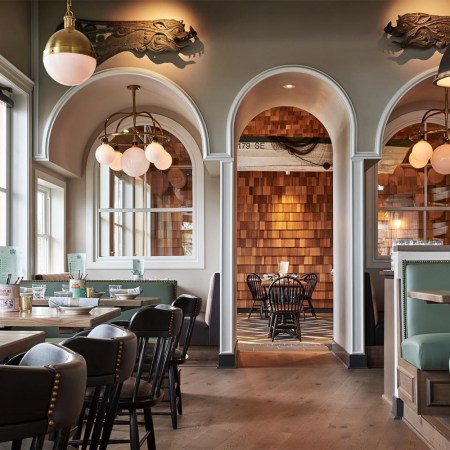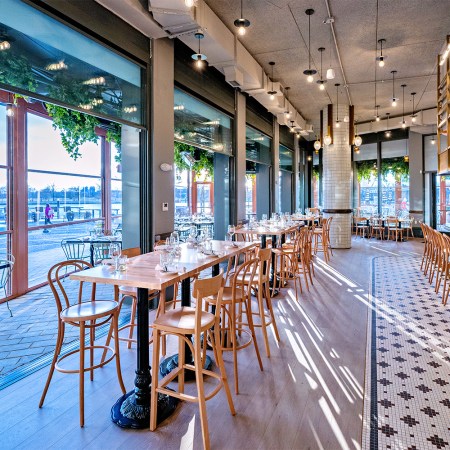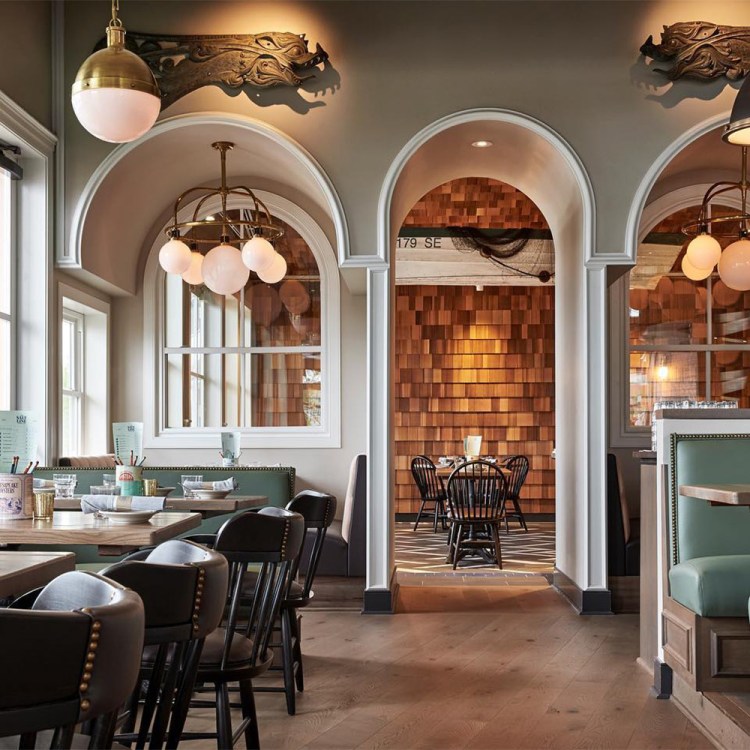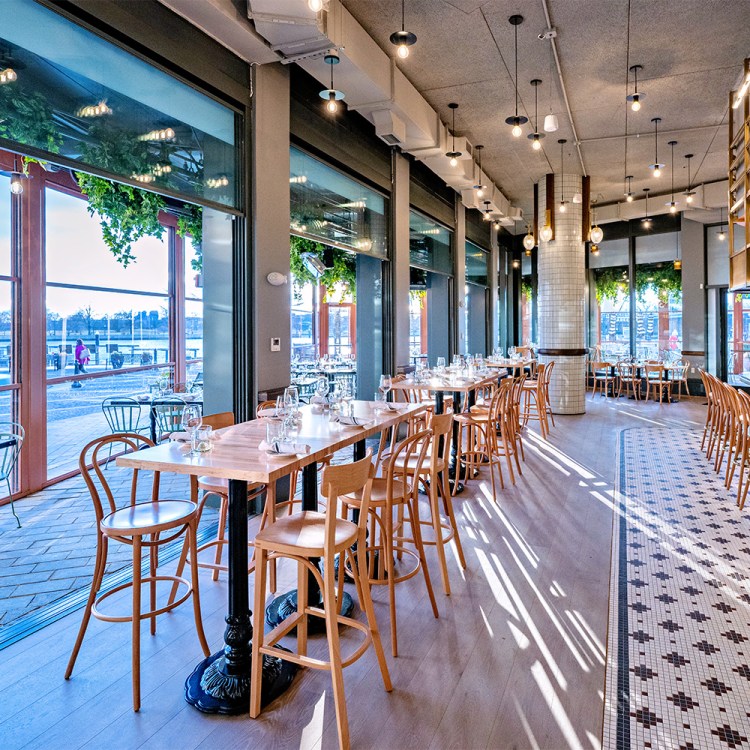The rest of the country can have their pumpkin spice season. In D.C, we have something better: the largest edible fruit native to North America. And it’s growing here, within city limits — in Rock Creek Park, and along the Potomac, in bunches that resemble squat bananas. Even better: Pawpaws have a creamy texture that earned them the nickname of “custard apple,” with a rich, fruity flavor reminiscent of the three-way lovechild of banana, pineapple, and mango.
“The first time I found one in the wild and took a bite, I was blown away by the exotic flavor and texture,” says chef Jeremiah Langhorne of the Michelin-starred The Dabney. “It’s like no other fruit from the area and opens a ton of exciting options.”
But while many locals know the thrill of finding wild pawpaws, in reality, it can be tough to … get your paws on them. They’re ripe for the picking during a brief window, usually from around late August through now-ish, depending on the weather. One feasibility study from Harvard recently found that the hardy fruit, which can survive temperatures of 25 below without sustaining damage, is likely to soon spread its wings beyond the 26 states across the country where it now grows naturally due to the effects of climate change. But even while they’re beginning to spring up in unlikely spots, pawpaws are finnicky: difficult to ship due to bruising, and difficult to supply with any reliability, given their incredibly short season. As the food world becomes ever more captivated by local ingredients, pawpaw season has become a bit of a local holiday for restaurateurs and home cooks alike.
At the Dabney, Langhorne has long cultivated a menu guided by the Mid-Atlantic, with a focus on American food and local produce. Offerings may include Maryland blue crab with walnut, apple, and brown butter vinaigrette or local pork with Seckel pear and whiskey. On his current menu, alongside local oysters with Concord grape vinegar mignonette, he features local radishes with a pawpaw-infused butter.

“Pawpaws mean a lot to me, as a chef who focuses primarily on the ingredients of the Mid-Atlantic region,” says Langhorne.
Neal Peterson (aka Papa Pawpaw), the pawpaw expert behind Peterson Pawpaws, doesn’t recall enjoying this fruit as a child growing up in the heart of Appalachia, where they grow wild.
“As a child, I saw pawpaws frequently in the woods, but it never occurred to me to eat them until I was older, in graduate school at West Virginia University,” he says, noting that this was when his path to studying the fruit began.
“I was a graduate instructor at WVU, leading lab classes in ecology down to the flood plain of the Monongahela River,” he recalls. “That was when I tasted my first pawpaw in 1974, and I was blown away by how delicious it was.”
Today, Peterson is one of the foremost pawpaw experts in the region, developing his own varieties and selling his trees via nurseries across the country and around the world.
“Although I have worked with breeding other woody plants – most notably various ornamentals such as magnolias — the pawpaw holds a special place in my heart because it is a delicious, tropical-tasting fruit that happily flourishes in our forest,” he says, noting that of the members of the family Annonaceae to which it belongs, “only the pawpaw can withstand freezing temperatures. It really is a unique plant in our woodland that deserves more attention.”
Peterson enjoys eating pawpaws fresh or on ice cream. He even bakes them into a quick bread, similar to banana bread.
“Anything you can do with a banana, you can do with a pawpaw,” he says.
Chef Langhorne, meanwhile, loves roasting pawpaw on the hearth and incorporating the fruit into condiments like mustards, butters, sauces, and vinaigrettes, taking full advantage of them for however long their short season allows. As a fruit that proliferates throughout the DC area – and even within the city limits – Langhorne says it’s a true element of local terroir.
“I would say that the pawpaw is emblematic of the region,” adds Peterson. “Anyone who is tasting a pawpaw is a priority of those who aspire for a connection with the land and the old ways of the country.”
Here are some of our favorite spots in DC to have a taste before this delicious local fruit disappears.
The Dabney
At this Michelin-starred spot, pawpaw flavors mustards, butters, and other condiments.
Deep Run Pawpaw Orchard
This orchard and wholesale supplier in Maryland produces seven varieties of pawpaw, some of which are sold by local purveyors at farmer’s markets in DC and beyond.
Earthy Delights
If you can’t forage or find pawpaws locally, consider ordering some online (available either fresh or frozen) from this supplier.
Checkerspot Brewing Company
You’ll have to head to Baltimore to sample Maximum Fruitage Paw Paw beer on draft, but you can also find it in cans online. A New England IPA-style beer, it’s hopped with Mosaic, El Dorado, and Azacca as well as over 300 pounds of pawpaws sourced from Deep Run.
Lindera Farms
Lindera Farms produces a fruity pawpaw vinegar with lovely caramel notes – perfect as a swap for white balsamic long after pawpaw season is over.
This article was featured in the InsideHook DC newsletter. Sign up now for more from the Beltway.






















